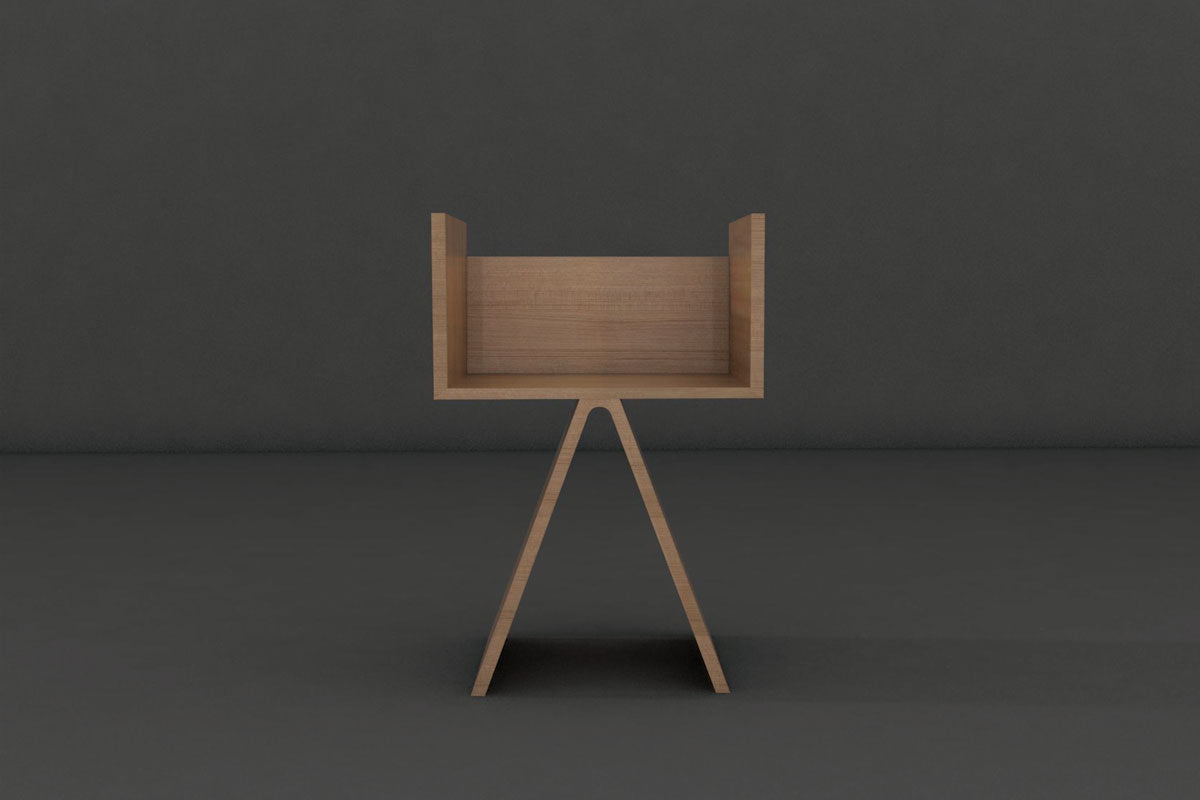Among the skyscrapers of the modern city of Milan, crystal and metal buildings, monumental churches, and its amazing artistic heritage, we can find the studio of the increasingly mentioned Claudia Suárez Ahedo.
The creator of the famous Ch’up chair, which is a tribute to Mexican women and stands out for its combination of curvy and straight shapes, representing sensuality and the female strength at once, opened the doors for us to learn a little more about her work and her perception on how Mexican design is received by a market foreign to ours.
From her studio in Italy, where this Mexican architect and interior designer lives, focused on the development of projects with a harmonic and functional design to achieve comfort, she tells us how her designs, through which she explores new shapes and ideas, pretend to blur the line between furniture and art.

Where do you find your inspiration?
Ideas emerge when I travel and step outside my comfort zone, this is also the best way for me to stay motivated. Regarding my creative processes, there are several factors that influence, help me observe, pay attention to needs, and examine nature’s ways, which offers endless shapes. Art and music are also my great sources of inspiration.
What makes your designs special?
I like to play with the possibilities offered by geometry and this is how I manage to step outside the conventional in order to create pieces and designs whose purpose is to be unique. My goal is to create pieces that stand out and provide the space with a focal point while being a combination between functional and sculptural.
How do you face the blank canvas; which steps do you follow while designing?
Starting a design is always a challenge that should be faced with fun. There are ideas that need more time than others to achieve a genuine quality, reason why it is important not to give up. This is also why enjoying the creative process involved in every stroke until you get the desired result is valuable.

Which is your production process?
It is a long process since in order to reach the desired design, there are many observation and redesigning hours involved in reaching a final purpose. We should add to my self-criticism and to the fact that I am excessively detail-oriented, that we architects are always looking to polish ideas as much as we can.
Once I feel satisfied with the project, I send it to the production stage; the workforce that supports me is here in Milan since it is where I live, this is how I can control production in detail for each piece. It is a very meticulous and craft work.
How do you perceive Mexican design is seen in the rest of the world?
I think it manages to position itself with every passing day within the top tiers of world trends. As a country, we have many qualities that make us stand out, which when shown in designs like objects, textiles, and furniture, manage to create a positive and impressive response internationally.
Our way of perceiving colors, materials, and shapes leads us to create projects that transmit the joy Mexico has as a country, and that is something the whole world loves.

Looking at her work and listening to what she says, she shows us, once more, that there is no need to turn to clichés to offer works from our culture, deeply rooted in our way of living and perceiving reality, and what we should focus on is in taking care of details, not only while designing, but also when producing.
And this is how we say goodbye to Claudia and her reinvention of everyday items into sculptural, functional, and focal pieces, of course through a touch of unexpected color.


